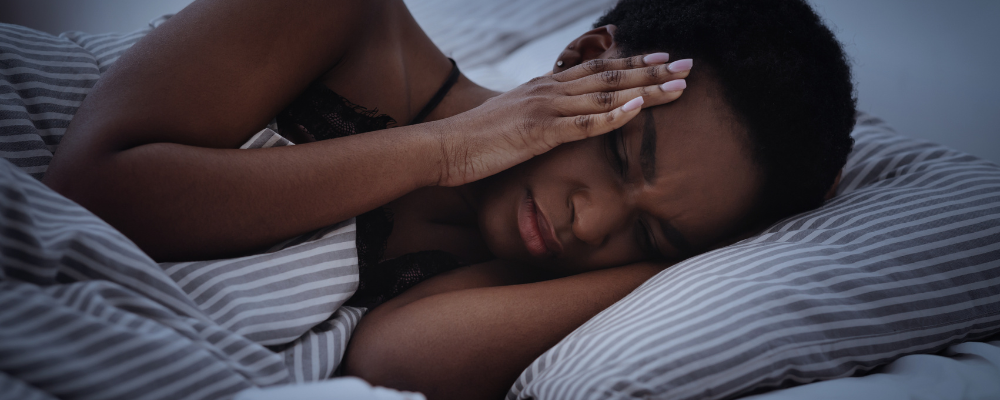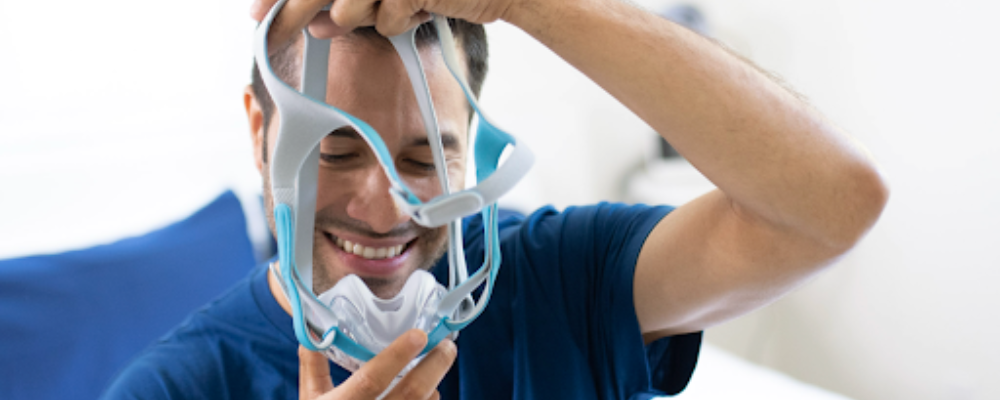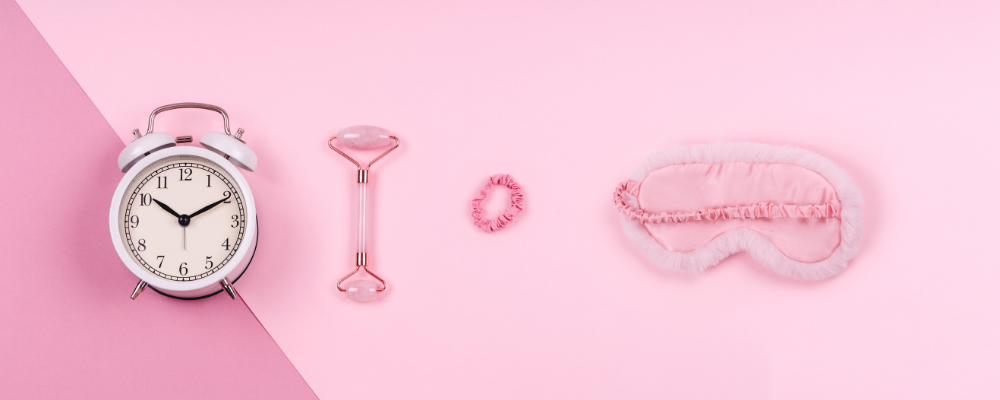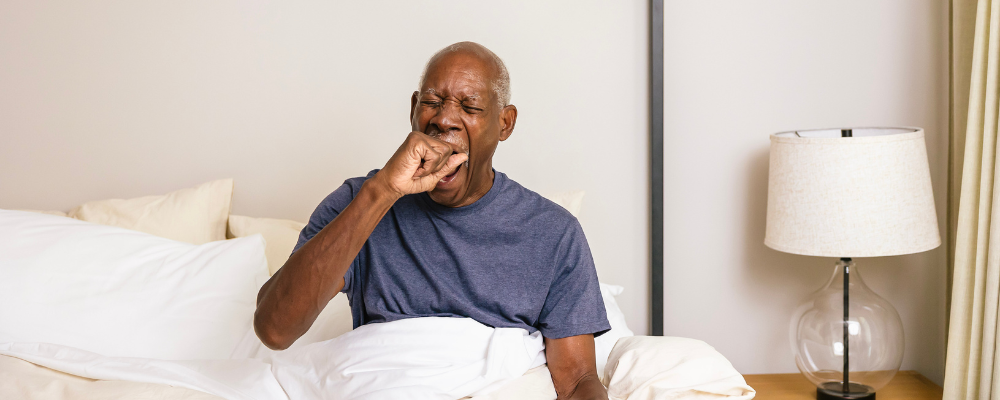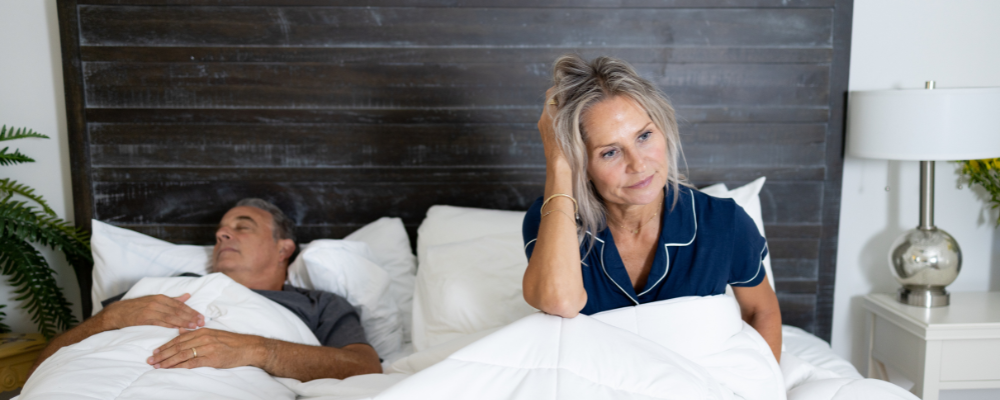Sleep apnea headaches are a rude awakening. At least, sleep apnea headaches are what it seems like is causing your morning headache, but how can you tell? With so many types of headaches, it can be tricky to differentiate a sleep apnea headache from others. If you are an obstructive sleep apnea (OSA) patient suffering from frequent headaches, we’re here to help you figure out if the two really are connected and what to do about it!
Can Sleep Apnea Give You Headaches?
Yep! It’s definitely a bummer that sleep apnea can give you headaches. In fact, frequent or chronic headaches are one of the most common signs of OSA.
Upper airway collapse—the problem at the root of obstructive sleep apnea—decreases your blood oxygen. This is a condition called hypoxemia. Each time this happens, your body reacts to the possibility of life-threateningly low oxygen levels. Basically, it senses the danger of suffocation.
In response, it ramps up the production of stress hormones like adrenaline and cortisol and can potentially inflame blood vessels. If you’ve ever woken up suddenly gasping for air or feeling like you’re choking, thank your body chemistry for waking you up!
Unfortunately, each of these reactions can contribute to headaches, put strain on your cardiovascular system, and cause sleep disturbances. Sleep apnea syndrome patients often experience morning headaches and excessive daytime sleepiness. A sore throat from loud snoring is also common due to inflamed tissues.
Headache, sleepiness, and sore throats may sound like a simple cold, but OSA can potentially be serious. All the strain on your cardiovascular system from oxygen desaturation increases blood pressure—your doctor calls this hypertension—which can lead to a heart attack.
Does the Severity of OSA Worsen Sleep Apnea Headaches?
There is conflicting information linking OSA severity to the occurrence of morning headaches. One study on the JAMA network found that participants woke up with morning headaches due to OSA, and that the worse the OSA severity, the worse the severity of the associated morning headaches too.
Another study, however, did not find the same evidence, stating that “...[T]here is a lack of evidence that MH [morning headache] is associated with the severity of OSA.” They conclude that there is a need for an additional classification of ‘sleep-related headache.’ Headache classification is an interesting topic, so we’ll dig a little deeper!
Do Sleep Apnea Headaches Last All Day?
Sleep apnea headaches tend to go away within 4 hours of waking. Some may even go away within an hour. However, they have also been known to last for several hours after waking up. The International Classification of Headache Disorders is a fascinating medical resource that is currently on its third edition. It classifies a sleep apnea headache as a Secondary Headache, with its cause attributed to a disturbance in homeostasis.
Basically, obstructive sleep apnea disturbs the body’s balance of oxygenation and hormones. These imbalances can trigger headaches. If you find this as interesting as we do, check out these specific details about sleep apnea headaches from the ICHD.
Sleep Apnea Headaches vs. Migraines
While sleep apnea headaches tend to go away within 4 hours of waking, migraines, on the other hand, usually linger between 4 and 72 hours. Yeesh!
Migraines are classified as Primary Headaches, because they are their own medical issue. They can occur without other medical factors. They could, of course, be linked to a different disorder, in which cases they could also be classified as Secondary.
Migraines are also typically felt on one side of the head as a pulsing pain. In contrast, OSA headaches tend to be a sensation of pressure on both sides. Migraines are often accompanied by other symptoms, too, like halos, light and/or sound sensitivity, and nausea.
Another kind of Primary Headache associated with sleeping is a hypnic headache. These are different from sleep apnea headaches and migraines in that they tend to wake people up in the middle of the night during REM sleep.
If you are experiencing long-lasting, severe headaches about 15 days out of 30, or if you keep waking up in the middle of the night due to an aching head, you may be moving out of the realm of sleep apnea headaches. You should certainly talk to your doctor about whichever symptoms you are experiencing to explore effective treatments that can improve your quality of life.
How Do You Get Rid of Sleep Apnea Headaches?
Unfortunately for many patients, sleep apnea and their corresponding headaches come as a package deal. The only effective way to get rid of headaches related to sleep apnea is to treat the underlying sleep apnea.
If you’re already treating your OSA with CPAP (or daytime oral appliances) and start experiencing headaches, definitely reach back out to your doctor or dedicated Aeroflow Sleep Specialist. Your treatment may need to be adjusted to better meet your needs.
If this is your first rodeo with OSA, the journey starts by talking to your doctor about your suspected symptoms of sleep apnea. Your doctor may order a sleep study to gather polysomnographic evidence (information about your body while it sleeps) that can determine the presence and severity of sleep apnea.
The generalist overseeing this procedure will measure your AHI (Apnea-Hypopnea Index) while you sleep. This counts how many times per hour you experience a drop in breathing or stop breathing entirely for 10 seconds or more. The higher the AHI, the more severe the case of apnea.
Continuous positive Airway Pressure (CPAP) treatment is the most common, non-invasive treatment option for OSA patients. CPAP machines vary in construction and functionality, so it’s best to work with sleep experts who can guide you to the right one; like Aeroflow Sleep. We’ll help you determine which system is best for your needs, includes the features you’d like, and will then work with your insurance company on your behalf! Newly diagnosed patients are welcome to sign up using the link below.


